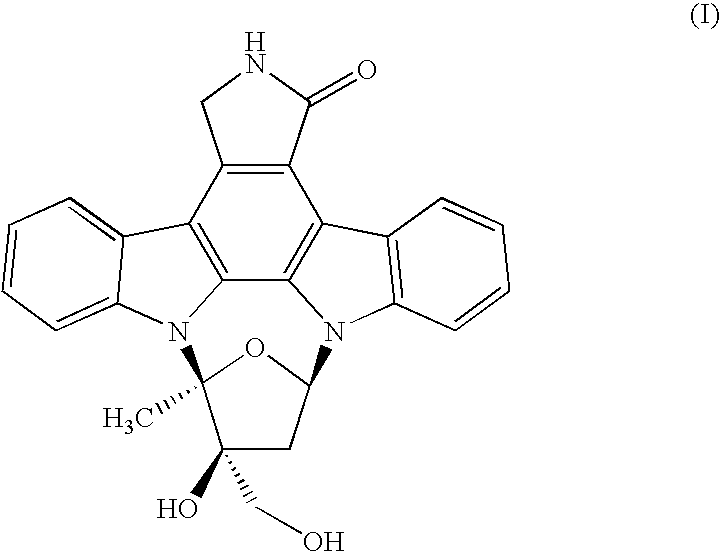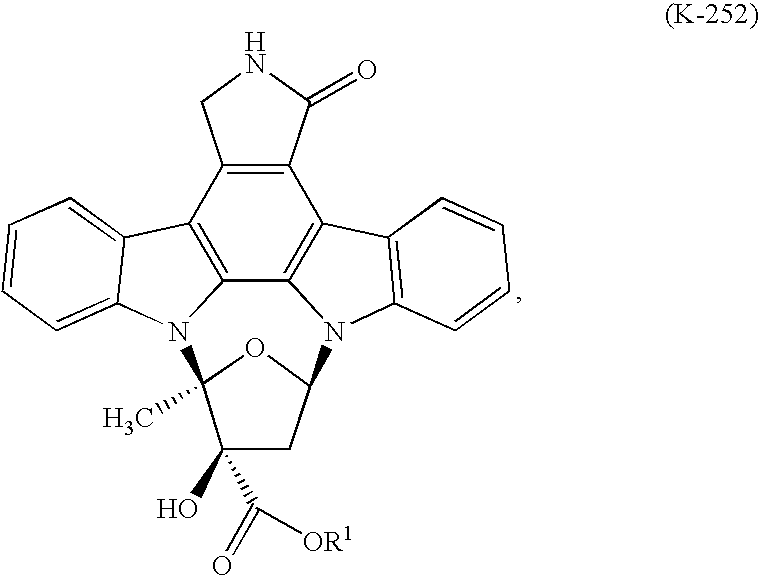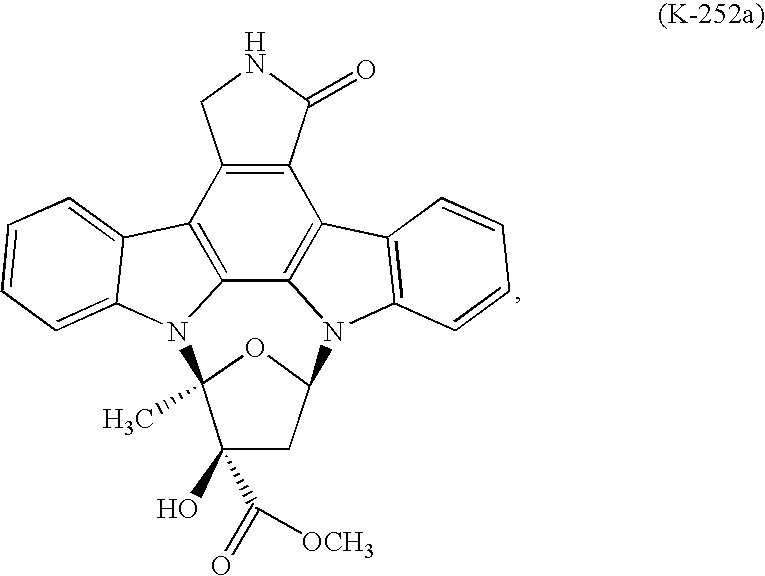Process to make lestaurtinib
a lestaurtinib and process technology, applied in the field of lestaurtinib making process, can solve problems such as difficult scalable reaction conditions
- Summary
- Abstract
- Description
- Claims
- Application Information
AI Technical Summary
Problems solved by technology
Method used
Image
Examples
example 1
[0024]K-252a was treated with a mixture of methanol (2 Kg / Kg K-252a) and toluene (8 Kg / Kg K-252a) at ambient temperature to produce a slurry to which was added sodium borohydride caplets (0.16 Kg / Kg K-252a) in portions over 6 hours. The solids in the reactor dissolved to provide a biphasic solution which was stirred for 3 hours, after which time 0.2% of K-252a remained. The lower layer was isolated, diluted with methanol (11 Kg / KG K-252a), and quenched with glacial acetic acid (0.41 Kg / Kg K-252a), which caused a small amount of amorphous lestaurinib to form. Stirring at room temperature converted the amorphate to lestaurinib methanolate. The methanol solvate was collected by vacuum filtration and washed with methanol (2 Kg / Kg K-252a) and water (2 Kg / Kg K-252a). One third of the methanol solvate was dissolved in acetone (36 Kg / Kg K-252a) and methanol (24 Kg / Kg K-252a) at 55° C. The solution was polish filtered through a series of polypropylene filters. Following filtration it was dil...
PUM
 Login to View More
Login to View More Abstract
Description
Claims
Application Information
 Login to View More
Login to View More - R&D
- Intellectual Property
- Life Sciences
- Materials
- Tech Scout
- Unparalleled Data Quality
- Higher Quality Content
- 60% Fewer Hallucinations
Browse by: Latest US Patents, China's latest patents, Technical Efficacy Thesaurus, Application Domain, Technology Topic, Popular Technical Reports.
© 2025 PatSnap. All rights reserved.Legal|Privacy policy|Modern Slavery Act Transparency Statement|Sitemap|About US| Contact US: help@patsnap.com



